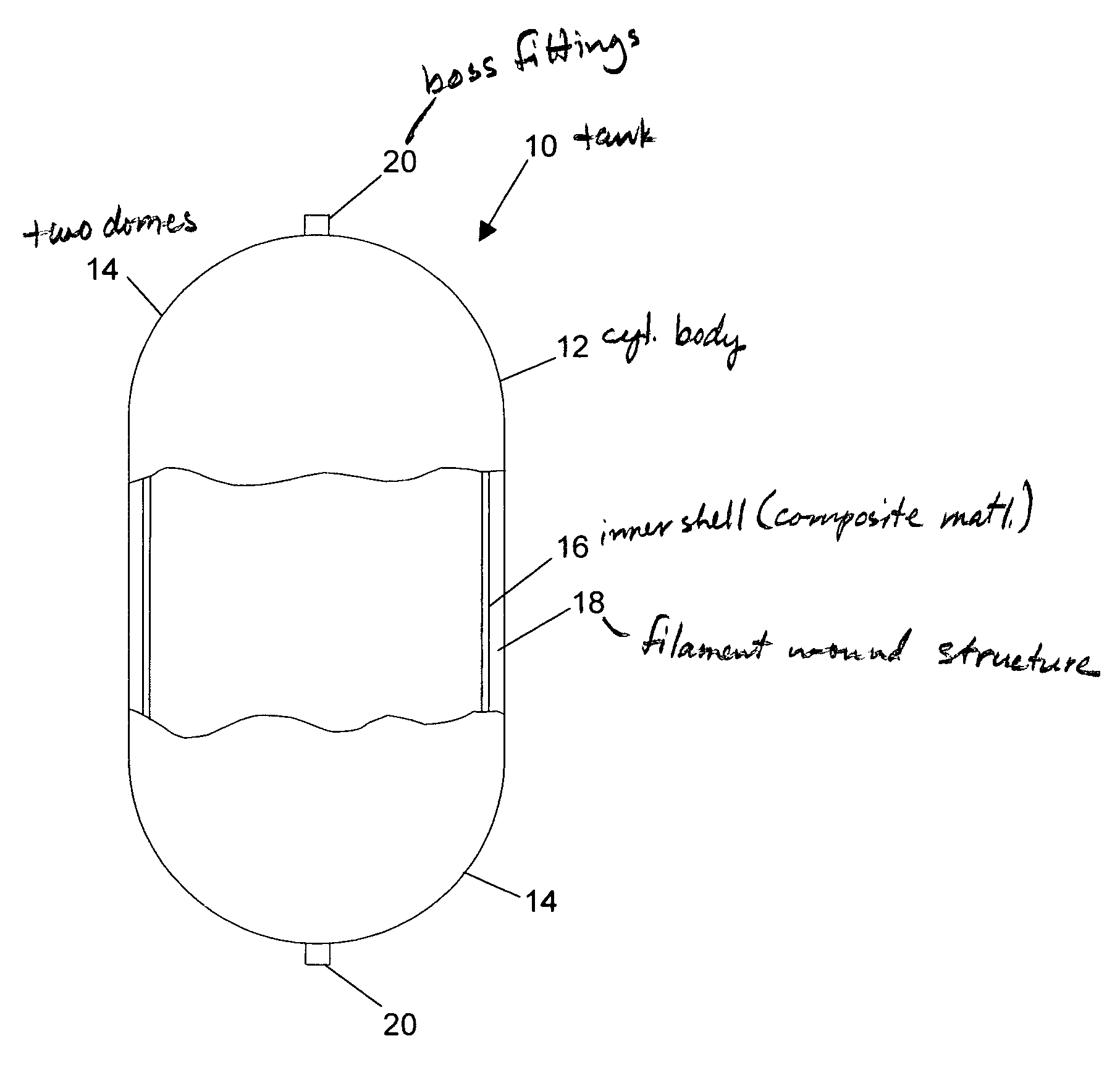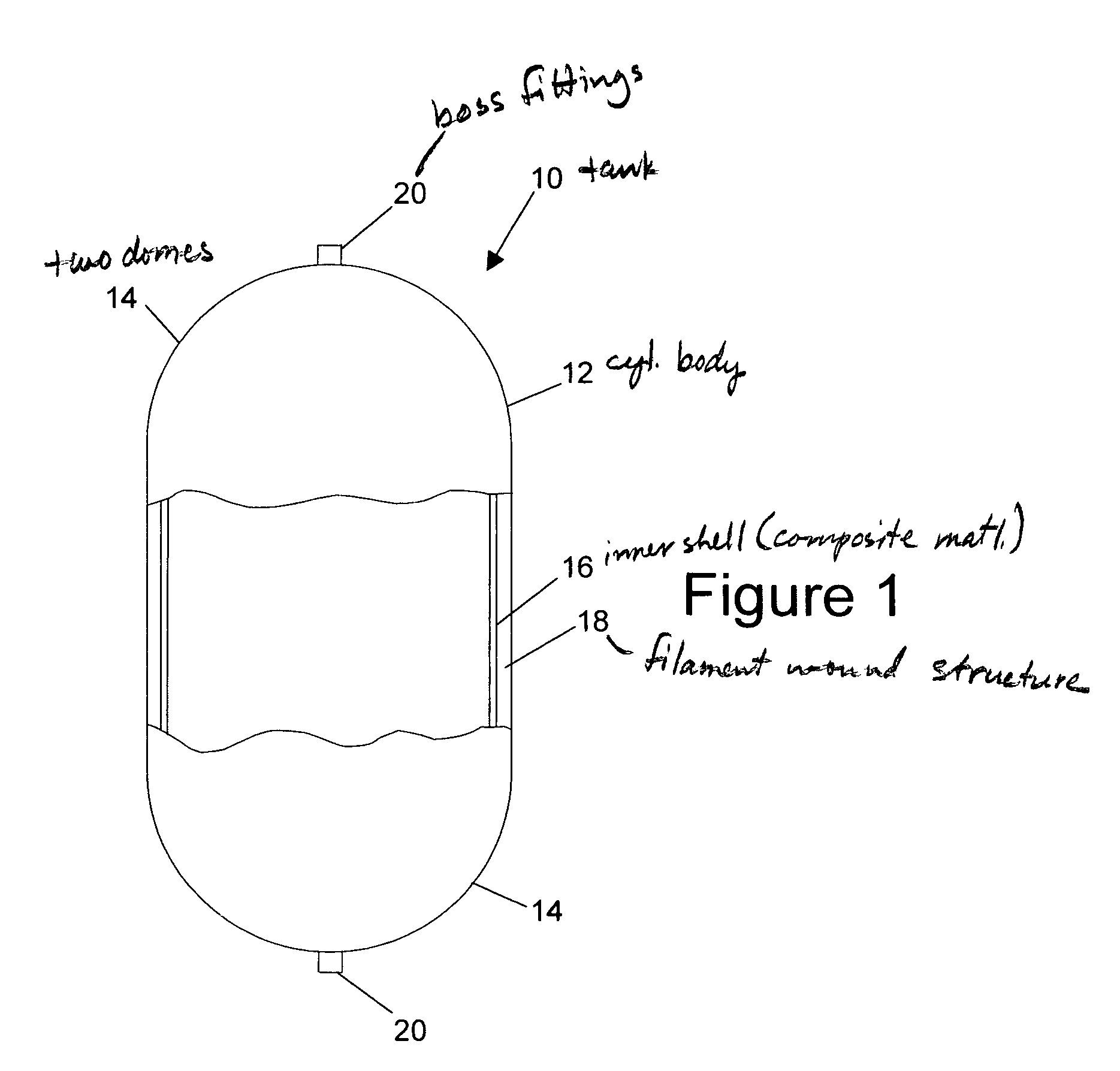Composite pressure tank and process for its manufacture
a technology of pressure tank and composite material, which is applied in the direction of vessel construction details, transportation and packaging, mechanical equipment, etc., can solve the problems of high thermal stress at the interface, rupture of the vessel, and the thermal stress problem of composite pressure vessels with metallic liners, etc., and achieve the effect of high cost and low weigh
- Summary
- Abstract
- Description
- Claims
- Application Information
AI Technical Summary
Benefits of technology
Problems solved by technology
Method used
Image
Examples
Embodiment Construction
[0041]As shown in the drawings for purposes of illustration, the present invention pertains to pressure vessels for use in applications in which weight, cost, or both are important concerns. Although the invention was made with launch vehicle propellant tanks and other space vehicle applications in mind, it may also be usually applied in other fields. In the past, pressure vessels of this general type have been made to include a metal liner, or have been made in part from composite materials that must be cured the controlled temperature and pressure environment of an autoclave.
[0042]In accordance with the present invention, a pressure vessel is formed to include an inner shell of a composite material, which is then filament wound with an outer composite structure and cured out-of-autoclave. Most pressure vessels are either spherical or cylindrical in shape. The one described here by way of example is cylindrical with domed, geodesic, iso-tensoid dome profiles. However, for convenien...
PUM
| Property | Measurement | Unit |
|---|---|---|
| fiber angle | aaaaa | aaaaa |
| fiber angle | aaaaa | aaaaa |
| fiber angle | aaaaa | aaaaa |
Abstract
Description
Claims
Application Information
 Login to View More
Login to View More - R&D
- Intellectual Property
- Life Sciences
- Materials
- Tech Scout
- Unparalleled Data Quality
- Higher Quality Content
- 60% Fewer Hallucinations
Browse by: Latest US Patents, China's latest patents, Technical Efficacy Thesaurus, Application Domain, Technology Topic, Popular Technical Reports.
© 2025 PatSnap. All rights reserved.Legal|Privacy policy|Modern Slavery Act Transparency Statement|Sitemap|About US| Contact US: help@patsnap.com



